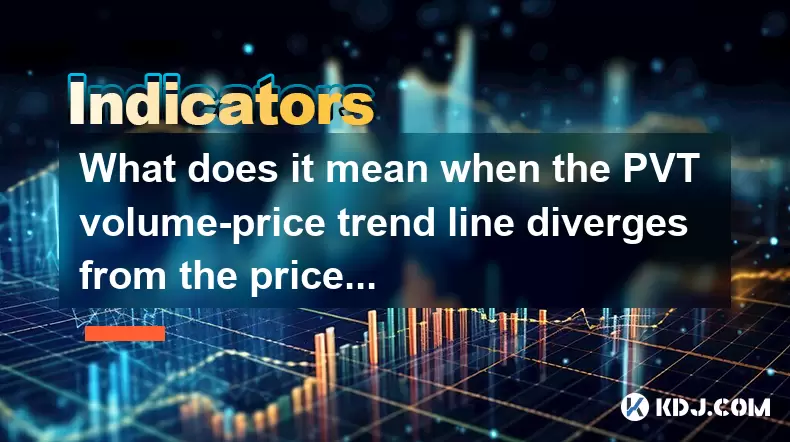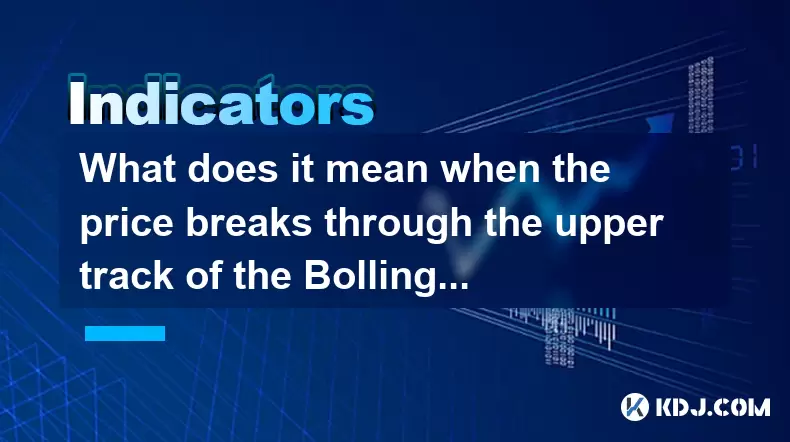-
 Bitcoin
Bitcoin $117500
-0.66% -
 Ethereum
Ethereum $3760
-1.24% -
 XRP
XRP $3.087
-2.54% -
 Tether USDt
Tether USDt $0.9999
-0.01% -
 BNB
BNB $803.6
-4.03% -
 Solana
Solana $180.3
-4.15% -
 USDC
USDC $0.9998
-0.01% -
 Dogecoin
Dogecoin $0.2218
-4.92% -
 TRON
TRON $0.3366
3.71% -
 Cardano
Cardano $0.7785
-3.73% -
 Hyperliquid
Hyperliquid $42.90
-4.75% -
 Sui
Sui $3.797
-7.45% -
 Stellar
Stellar $0.4165
-2.32% -
 Chainlink
Chainlink $17.65
-4.17% -
 Bitcoin Cash
Bitcoin Cash $561.0
-3.86% -
 Hedera
Hedera $0.2611
-4.54% -
 Avalanche
Avalanche $24.33
-7.02% -
 UNUS SED LEO
UNUS SED LEO $8.972
0.06% -
 Litecoin
Litecoin $107.6
-2.79% -
 Toncoin
Toncoin $3.254
-1.84% -
 Shiba Inu
Shiba Inu $0.00001306
-4.69% -
 Ethena USDe
Ethena USDe $1.001
0.00% -
 Uniswap
Uniswap $10.10
-4.83% -
 Polkadot
Polkadot $3.902
-4.63% -
 Monero
Monero $315.1
-2.57% -
 Dai
Dai $1.000
0.02% -
 Bitget Token
Bitget Token $4.499
-2.53% -
 Pepe
Pepe $0.00001145
-7.38% -
 Cronos
Cronos $0.1479
6.07% -
 Aave
Aave $281.3
-4.07%
What does it mean when the PVT volume-price trend line diverges from the price?
The Price-Volume Trend (PVT) indicator helps traders spot potential trend reversals by highlighting divergences between price and volume momentum in cryptocurrency markets.
Jun 19, 2025 at 03:42 am

Understanding the Basics of PVT and Its Role in Technical Analysis
In cryptocurrency trading, technical indicators are essential tools for interpreting market behavior. One such indicator is the Price-Volume Trend (PVT), which combines price movement and volume to provide insights into underlying supply and demand dynamics. The PVT line is constructed by multiplying the percentage change in price with the volume for each period and then cumulating the result. This creates a running total that reflects how volume interacts with price changes over time.
The key function of the PVT line is to highlight whether volume is flowing into or out of an asset. When the PVT rises, it suggests accumulation; when it falls, it indicates distribution. Traders often plot the PVT alongside price charts to detect potential divergences that could signal upcoming trend reversals.
What Is Divergence Between PVT and Price?
Divergence occurs when the direction of the PVT line does not align with the direction of the price. For instance, if the price is making higher highs but the PVT line is making lower highs, this is considered a bearish divergence. Conversely, if the price is forming lower lows while the PVT line forms higher lows, this is seen as a bullish divergence.
This mismatch between price and volume momentum can indicate weakening trends. In crypto markets, where volatility is high and sentiment shifts quickly, identifying such divergence early can be crucial. It often reflects that the current price move lacks conviction from volume, suggesting that the trend may soon reverse.
How to Identify PVT Divergence on Crypto Charts
Recognizing divergence requires careful observation of both price action and the PVT line. Here’s how you can identify it step-by-step:
- Open your preferred charting platform and add the PVT indicator.
- Ensure that the price chart and the PVT line are visible side by side.
- Look for areas where the price makes a new high or low but the PVT line does not confirm it.
- Confirm the divergence by checking multiple timeframes—what looks like divergence on a 1-hour chart might not appear on a 4-hour chart.
- Use support and resistance levels or candlestick patterns to validate the potential reversal.
Traders should always look for confirmation before acting on divergence signals, especially in fast-moving crypto markets where false signals can occur frequently.
Implications of PVT Divergence in Cryptocurrency Trading
When the PVT line diverges from price in crypto trading, it often signals a shift in market sentiment. For example, during a strong uptrend, rising prices typically coincide with increasing volume. However, if prices keep climbing but the PVT line starts to fall, it implies that fewer traders are participating in the rally, which could lead to a pullback or reversal.
Similarly, during a downtrend, if the price continues to drop but the PVT line begins to rise, it may suggest that selling pressure is waning and buyers are stepping in. These signals are particularly valuable in cryptocurrencies like Bitcoin and Ethereum, where large institutional movements can significantly affect volume and price dynamics.
It’s important to note that PVT divergence does not guarantee a reversal—it only suggests that the existing trend may be losing strength. Therefore, traders should combine it with other technical tools like moving averages or RSI for better accuracy.
Common Misinterpretations of PVT Divergence
Many traders misinterpret PVT divergence, assuming that it always leads to a reversal. However, divergence can persist for extended periods, especially in strong trending markets. A cryptocurrency could continue rising despite negative divergence simply due to overwhelming market hype or news-driven momentum.
Another common mistake is failing to adjust for volume spikes caused by external events. For instance, a sudden surge in volume due to a major exchange listing or regulatory announcement may distort the PVT line, creating false divergence signals. Hence, context matters, and traders must assess the broader market environment before relying solely on PVT divergence.
Additionally, some traders overlook the importance of timeframe alignment. A divergence that appears on a short-term chart may not hold significance on a longer timeframe. Always cross-check across multiple intervals to avoid premature entries or exits.
Using PVT Divergence in Conjunction With Other Indicators
To increase the reliability of PVT divergence, traders often combine it with other technical indicators. For example:
- Overlay the Relative Strength Index (RSI) to check for overbought or oversold conditions that align with the divergence.
- Apply moving average crossovers to confirm the beginning of a new trend after divergence.
- Use Bollinger Bands or volume profile to assess whether the current price level has historical support or resistance nearby.
By integrating these additional layers of analysis, traders can filter out noise and focus on high-probability setups. This multi-indicator approach is especially useful in cryptocurrency trading, where false signals are common due to high volatility and thin order books on certain exchanges.
Frequently Asked Questions
Q: Can PVT divergence be used effectively in all cryptocurrency pairs?
A: While PVT divergence can be applied to any pair, its effectiveness varies depending on liquidity and trading volume. Major pairs like BTC/USDT or ETH/USDT tend to produce more reliable signals compared to less liquid altcoins, where erratic volume can generate misleading divergences.
Q: How long should I wait before acting on a PVT divergence signal?
A: There is no fixed waiting period. Some traders enter immediately upon spotting a clear divergence, while others wait for additional confirmation such as a candlestick reversal pattern or a break of a key support/resistance level. The key is to define a consistent strategy and backtest it before live trading.
Q: Is PVT divergence more effective in bull or bear markets?
A: PVT divergence works in both types of markets but tends to be more reliable during consolidation phases rather than strong trends. In trending environments, divergence may appear prematurely and fail to predict actual reversals, so caution is advised.
Q: Are there alternative volume-based indicators similar to PVT?
A: Yes, alternatives include the On-Balance Volume (OBV) and the Volume Flow Indicator (VFI). Each has its own calculation method, but they all aim to link volume with price action. Traders often test several to see which aligns best with their trading style and market conditions.
Disclaimer:info@kdj.com
The information provided is not trading advice. kdj.com does not assume any responsibility for any investments made based on the information provided in this article. Cryptocurrencies are highly volatile and it is highly recommended that you invest with caution after thorough research!
If you believe that the content used on this website infringes your copyright, please contact us immediately (info@kdj.com) and we will delete it promptly.
- Trump Coin (TRUMP): Technical Analysis and Cryptocurrency Speculation
- 2025-07-30 02:50:13
- Snorter Presale: How This Solana Bot Could Spark the Next Crypto Explosion
- 2025-07-30 03:30:13
- BlockDAG, X1 App, and PEPE Rebound: The Crypto Trio Turning Heads
- 2025-07-30 01:30:13
- Solana Price Analysis & 2025 Prediction: Can SOL Outpace the Underdog?
- 2025-07-30 01:30:13
- FaZe Banks, MLG Coin, and Resignation: What the Heck Happened?
- 2025-07-30 00:50:13
- Americans, Grocery Costs, and the Great Coin Phase Out: Are You Ready?
- 2025-07-30 00:50:13
Related knowledge

What does it mean when the EMA combination crosses upward for the first time after sideways trading?
Jul 28,2025 at 03:43pm
Understanding the EMA and Its Role in Technical AnalysisThe Exponential Moving Average (EMA) is a widely used technical indicator in cryptocurrency tr...

What does it mean when the price breaks through the upper track of the Bollinger Band but the RSI is overbought?
Jul 30,2025 at 03:35am
Understanding Bollinger Bands and Their Upper TrackBollinger Bands are a widely used technical analysis tool developed by John Bollinger. They consist...

What signal does the ROC send when it rises rapidly from a low level and breaks through the zero axis?
Jul 27,2025 at 10:15am
Understanding the Rate of Change (ROC) IndicatorThe Rate of Change (ROC) is a momentum-based oscillator used in technical analysis to measure the perc...

What does it mean when the moving averages are glued together and a gap appears?
Jul 29,2025 at 07:49pm
Understanding Moving Averages in Cryptocurrency TradingMoving averages are among the most widely used technical indicators in the cryptocurrency tradi...

What does it mean when TEMA breaks through the long-term downward trend line?
Jul 29,2025 at 02:50pm
Understanding the Role of Smart Contracts in Decentralized Finance (DeFi)Smart contracts are self-executing agreements with the terms of the agreement...

What does it mean when the price breaks through the double bottom neckline and the moving averages are arranged in a bullish pattern?
Jul 28,2025 at 10:57am
Understanding the Double Bottom PatternThe double bottom is a widely recognized reversal chart pattern in technical analysis, particularly within the ...

What does it mean when the EMA combination crosses upward for the first time after sideways trading?
Jul 28,2025 at 03:43pm
Understanding the EMA and Its Role in Technical AnalysisThe Exponential Moving Average (EMA) is a widely used technical indicator in cryptocurrency tr...

What does it mean when the price breaks through the upper track of the Bollinger Band but the RSI is overbought?
Jul 30,2025 at 03:35am
Understanding Bollinger Bands and Their Upper TrackBollinger Bands are a widely used technical analysis tool developed by John Bollinger. They consist...

What signal does the ROC send when it rises rapidly from a low level and breaks through the zero axis?
Jul 27,2025 at 10:15am
Understanding the Rate of Change (ROC) IndicatorThe Rate of Change (ROC) is a momentum-based oscillator used in technical analysis to measure the perc...

What does it mean when the moving averages are glued together and a gap appears?
Jul 29,2025 at 07:49pm
Understanding Moving Averages in Cryptocurrency TradingMoving averages are among the most widely used technical indicators in the cryptocurrency tradi...

What does it mean when TEMA breaks through the long-term downward trend line?
Jul 29,2025 at 02:50pm
Understanding the Role of Smart Contracts in Decentralized Finance (DeFi)Smart contracts are self-executing agreements with the terms of the agreement...

What does it mean when the price breaks through the double bottom neckline and the moving averages are arranged in a bullish pattern?
Jul 28,2025 at 10:57am
Understanding the Double Bottom PatternThe double bottom is a widely recognized reversal chart pattern in technical analysis, particularly within the ...
See all articles

























































































